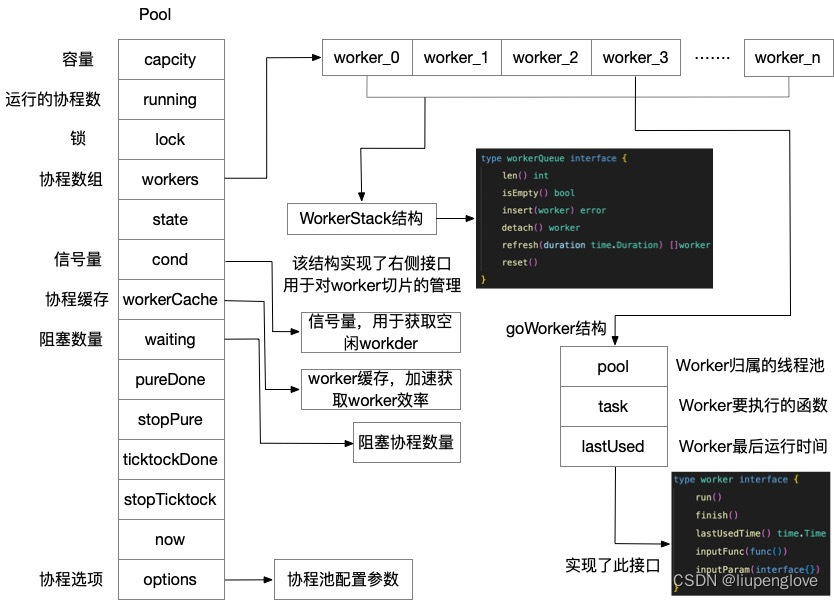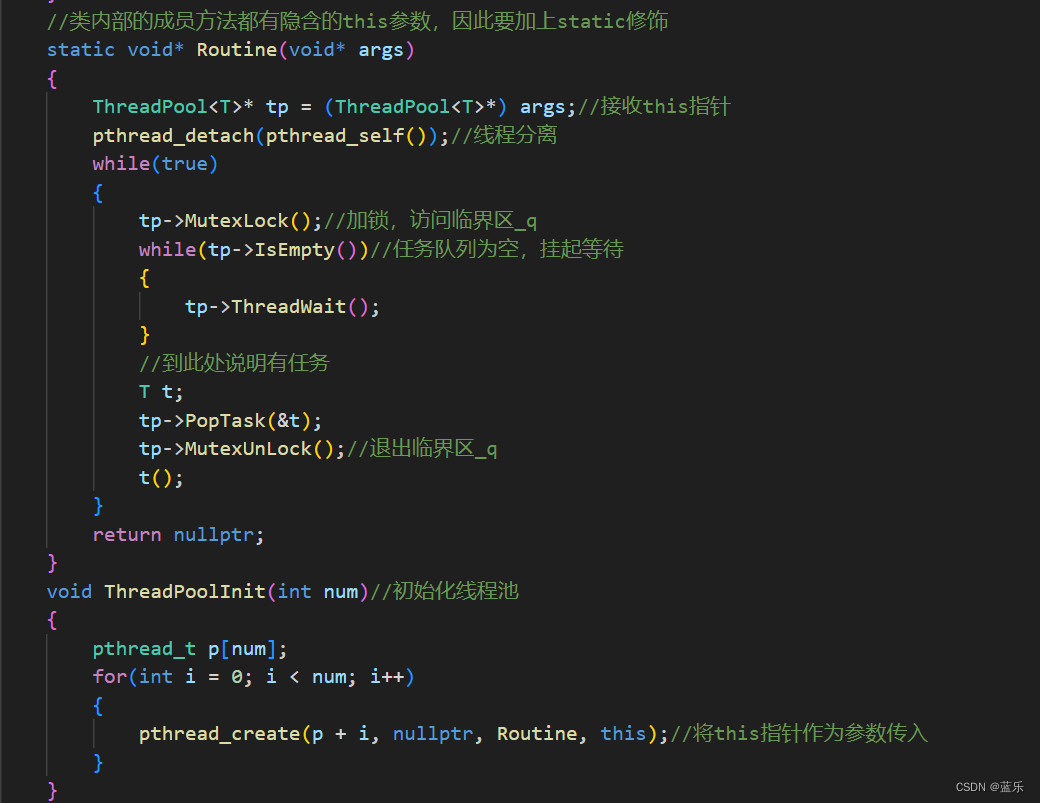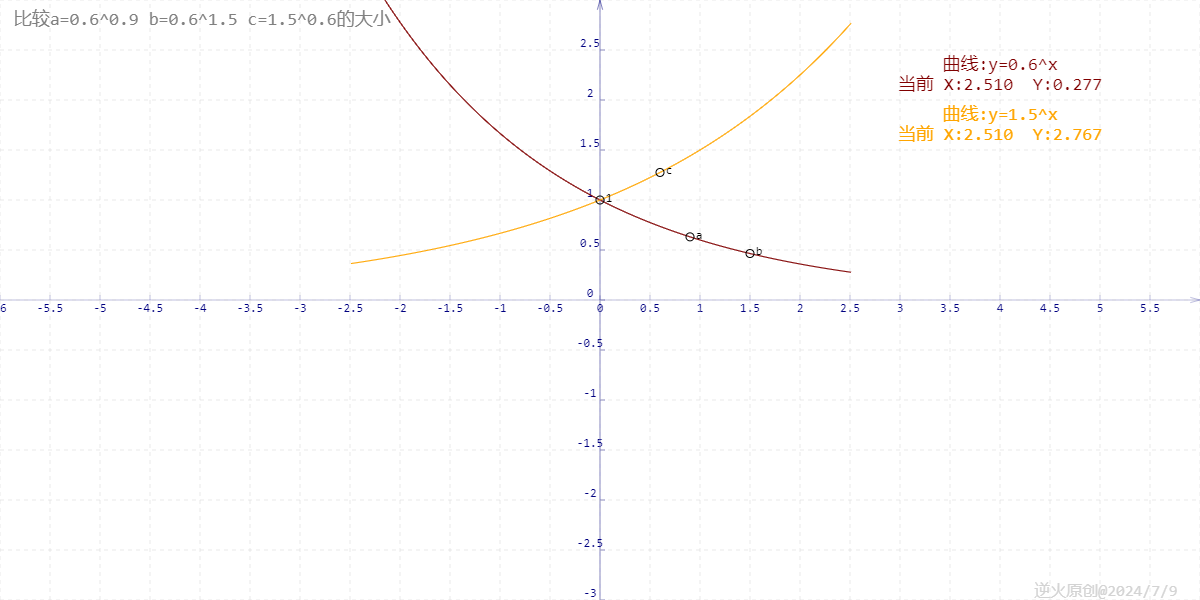1、总体架构
ants协程池,在使用上有多种方式(使用方式参考这篇文章:golang线程池ants-四种使用方法),但是在实现的核心就一个,如下架构图:

总的来说,就是三个数据结构: Pool、WorkerStack、goWorker以及这三个结构实现的方法,了解了这些,基本上对ants的实现原理就了如指掌了。
2、详细实现
2.1 worker的设计实现
worker结构如下:
type goWorker struct {
// pool who owns this worker.
pool *Pool
// task is a job should be done.
task chan func()
// lastUsed will be updated when putting a worker back into queue.
lastUsed time.Time
}该结构设计非常简单,三个成员:归属的线程池、执行函数、该worker最后一次运行时间,goWorker结构实现如下接口:
type worker interface {
run()
finish()
lastUsedTime() time.Time
inputFunc(func())
inputParam(interface{})
}核心函数run,该函数从管道task里获取到任务函数,并执行,执行完成后,将此worker放回协程池(此时worker阻塞等待任务到来,调用函数:w.pool.revertWorker(w)放回池子中),以便复用:
func (w *goWorker) run() {
w.pool.addRunning(1)
go func() {
defer func() {
if w.pool.addRunning(-1) == 0 && w.pool.IsClosed() {
w.pool.once.Do(func() {
close(w.pool.allDone)
})
}
w.pool.workerCache.Put(w)
if p := recover(); p != nil {
if ph := w.pool.options.PanicHandler; ph != nil {
ph(p)
} else {
w.pool.options.Logger.Printf("worker exits from panic: %v\n%s\n", p, debug.Stack())
}
}
// Call Signal() here in case there are goroutines waiting for available workers.
w.pool.cond.Signal()
}()
for f := range w.task {
if f == nil {
return
}
f()
if ok := w.pool.revertWorker(w); !ok {
return
}
}
}()
}finish函数,调用该函数,代表此worker的生命周期结束:
func (w *goWorker) finish() {
w.task <- nil
}这个时候run函数从遍历task管道中结束,进入defer函数,worker放入workerCache,备用。
inputFunc很容易理解,将任务放入管道,让worker去执行:
func (w *goWorker) inputFunc(fn func()) {
w.task <- fn
}2.2 workerStack结构
type workerStack struct {
items []worker
expiry []worker
}该结构就两个成员,都为worker的切片,items切片用于存储正常执行的worker,expiry存放过期的worker,workStack结构实现了如下接口:
type workerQueue interface {
len() int
isEmpty() bool
insert(worker) error
detach() worker
refresh(duration time.Duration) []worker // clean up the stale workers and return them
reset()
}len函数:返回正在运行worker的长度
isEmpty函数:判断是否有正在运行的worker
insert函数:将worker插入切片。
detach函数:获取一个worker。
refresh:更新所有worker,淘汰过期worker。
reset:清除所有worker。
重点看refresh函数:
func (wq *workerStack) refresh(duration time.Duration) []worker {
n := wq.len()
if n == 0 {
return nil
}
expiryTime := time.Now().Add(-duration)
index := wq.binarySearch(0, n-1, expiryTime)
wq.expiry = wq.expiry[:0]
if index != -1 {
wq.expiry = append(wq.expiry, wq.items[:index+1]...)
m := copy(wq.items, wq.items[index+1:])
for i := m; i < n; i++ {
wq.items[i] = nil
}
wq.items = wq.items[:m]
}
return wq.expiry
} 这个函数用于根据给定的时间间隔duration来刷新工作队列中的过期项。主要执行以下步骤:
获取队列长度:首先,通过调用
wq.len()获取工作队列wq中当前元素的数量n。如果队列为空(即n == 0),则直接返回nil,表示没有过期项。计算过期时间:通过
time.Now().Add(-duration)计算出一个时间点,这个时间点是duration时间之前的时间,即认为是“过期”的时间点。二分查找:使用
wq.binarySearch(0, n-1, expiryTime)在队列中查找第一个过期项的位置(即第一个最后使用时间早于expiryTime的项)。这个函数返回一个索引,如果找到这样的项,则返回该项的索引;如果没有找到,则返回-1。清理过期项:
- 首先,清空
wq.expiry切片,用它来存储所有过期的项。 - 如果找到了过期项(即
index != -1),则将wq.items中从0到index(包含index)的所有项(即所有过期项)追加到wq.expiry中。 - 然后,使用
copy函数将wq.items中从index+1到n-1的所有项向前移动,覆盖掉前面的过期项。这里m是copy函数返回的值,表示实际复制的元素数量,即队列中剩余的非过期项的数量。 - 接下来,遍历
wq.items中从m到n-1的所有位置,将它们设置为nil。 - 最后,通过
wq.items = wq.items[:m]更新wq.items的长度,去除所有过期的项。
- 首先,清空
返回过期项:函数返回
wq.expiry,这是一个包含所有被移除的过期项的切片。
需要注意的是,wq.items是一个切片,用于存储工作项;wq.expiry也是一个切片,用于临时存储过期的项。
2.3 Pool结构
pool结构的定义源码稍作改了一下,之前poolCommon的结构就是Pool的结构,目前最新版本做了一个简单的封装。
type Pool struct {
poolCommon
}
type poolCommon struct {
// capacity of the pool, a negative value means that the capacity of pool is limitless, an infinite pool is used to
// avoid potential issue of endless blocking caused by nested usage of a pool: submitting a task to pool
// which submits a new task to the same pool.
capacity int32
// running is the number of the currently running goroutines.
running int32
// lock for protecting the worker queue.
lock sync.Locker
// workers is a slice that store the available workers.
workers workerQueue
// state is used to notice the pool to closed itself.
state int32
// cond for waiting to get an idle worker.
cond *sync.Cond
// done is used to indicate that all workers are done.
allDone chan struct{}
// once is used to make sure the pool is closed just once.
once *sync.Once
// workerCache speeds up the obtainment of a usable worker in function:retrieveWorker.
workerCache sync.Pool
// waiting is the number of goroutines already been blocked on pool.Submit(), protected by pool.lock
waiting int32
purgeDone int32
purgeCtx context.Context
stopPurge context.CancelFunc
ticktockDone int32
ticktockCtx context.Context
stopTicktock context.CancelFunc
now atomic.Value
options *Options
}创建一个线程池:
// NewPool instantiates a Pool with customized options.
func NewPool(size int, options ...Option) (*Pool, error) {
if size <= 0 {
size = -1
}
opts := loadOptions(options...)
if !opts.DisablePurge {
if expiry := opts.ExpiryDuration; expiry < 0 {
return nil, ErrInvalidPoolExpiry
} else if expiry == 0 {
opts.ExpiryDuration = DefaultCleanIntervalTime
}
}
if opts.Logger == nil {
opts.Logger = defaultLogger
}
p := &Pool{poolCommon: poolCommon{
capacity: int32(size),
allDone: make(chan struct{}),
lock: syncx.NewSpinLock(),
once: &sync.Once{},
options: opts,
}}
p.workerCache.New = func() interface{} {
return &goWorker{
pool: p,
task: make(chan func(), workerChanCap),
}
}
if p.options.PreAlloc {
if size == -1 {
return nil, ErrInvalidPreAllocSize
}
p.workers = newWorkerQueue(queueTypeLoopQueue, size)
} else {
p.workers = newWorkerQueue(queueTypeStack, 0)
}
p.cond = sync.NewCond(p.lock)
p.goPurge()
p.goTicktock()
return p, nil
}看如下几行代码:
p.workerCache.New = func() interface{} {
return &goWorker{
pool: p,
task: make(chan func(), workerChanCap),
}
}workerCache为sync.Pool类型,sync.Pool是Go语言标准库中提供的一个对象池化的工具,旨在通过复用对象来减少内存分配的频率并降低垃圾回收的开销,从而提高程序的性能。其内部维护了一组可复用的对象。当你需要一个对象时,可以尝试从sync.Pool中获取。如果sync.Pool中有可用的对象,它将返回一个;否则,它会调用你提供的构造函数来创建一个新对象,sync.Pool的New字段是一个可选的函数,用于在池中无可用对象时创建新的对象。
这里这样写即为:当无可用的worker时,则通过New函数创建一个新的worker。
创建workder列表,内部其实就是创建了了一个切片,类型为workerStack,用于管理所有的worker。
p.workers = newWorkerQueue(queueTypeStack, 0)NewPool函数执行完成后,一个协程池就创建完成了。
协程池创建完成后,需要用来处理任务,如何将任务函数传递到worker去执行呢?看如下函数:
// Submit submits a task to this pool.
//
// Note that you are allowed to call Pool.Submit() from the current Pool.Submit(),
// but what calls for special attention is that you will get blocked with the last
// Pool.Submit() call once the current Pool runs out of its capacity, and to avoid this,
// you should instantiate a Pool with ants.WithNonblocking(true).
func (p *Pool) Submit(task func()) error {
if p.IsClosed() {
return ErrPoolClosed
}
w, err := p.retrieveWorker()
if w != nil {
w.inputFunc(task)
}
return err
}函数的入参为一个无返回值、无入参的函数,因此所有需要worker执行的函数都是func()类型,w, err := p.retrieveWorker(),取出一个空闲worker,取出成功后,将任务传递到worker内部:w.inputFunc(task),注意,当线程池中所有worker都忙碌时,inputFunc函数阻塞,一直到有worker空闲。
其他主要的函数,从池中获取worker的函数:
func (p *Pool) retrieveWorker() (w worker, err error) {
p.lock.Lock()
retry:
// First try to fetch the worker from the queue.
if w = p.workers.detach(); w != nil {
p.lock.Unlock()
return
}
// If the worker queue is empty, and we don't run out of the pool capacity,
// then just spawn a new worker goroutine.
if capacity := p.Cap(); capacity == -1 || capacity > p.Running() {
p.lock.Unlock()
w = p.workerCache.Get().(*goWorker)
w.run()
return
}
// Bail out early if it's in nonblocking mode or the number of pending callers reaches the maximum limit value.
if p.options.Nonblocking || (p.options.MaxBlockingTasks != 0 && p.Waiting() >= p.options.MaxBlockingTasks) {
p.lock.Unlock()
return nil, ErrPoolOverload
}
// Otherwise, we'll have to keep them blocked and wait for at least one worker to be put back into pool.
p.addWaiting(1)
p.cond.Wait() // block and wait for an available worker
p.addWaiting(-1)
if p.IsClosed() {
p.lock.Unlock()
return nil, ErrPoolClosed
}
goto retry
}这个函数,获取worker有三个逻辑:
- 当池中有空闲worker,直接获取。
- 当池中没有空闲worker,从缓存workerCache中取出过期的worker使用,复用资源,降低开销。
- 等待有worker执行完任务释放。(阻塞情况)
revertWorker,将worker放回池中,以执行下次的任务。
func (p *Pool) revertWorker(worker *goWorker) bool {
if capacity := p.Cap(); (capacity > 0 && p.Running() > capacity) || p.IsClosed() {
p.cond.Broadcast()
return false
}
worker.lastUsed = p.nowTime()
p.lock.Lock()
// To avoid memory leaks, add a double check in the lock scope.
// Issue: https://github.com/panjf2000/ants/issues/113
if p.IsClosed() {
p.lock.Unlock()
return false
}
if err := p.workers.insert(worker); err != nil {
p.lock.Unlock()
return false
}
// Notify the invoker stuck in 'retrieveWorker()' of there is an available worker in the worker queue.
p.cond.Signal()
p.lock.Unlock()
return true
}以上就为ants线程池实现的主要技术细节,希望对各位热爱技术的同学们提供一些些帮助。
3、总结
ants协程池是一个高性能、易用的Go语言协程池库,它通过复用goroutines、自动调度任务、定期清理过期goroutines等方式,帮助开发者更加高效地管理并发任务。无论是处理网络请求、数据处理还是其他需要高并发性能的场景,ants协程池都是一个值得推荐的选择。



































